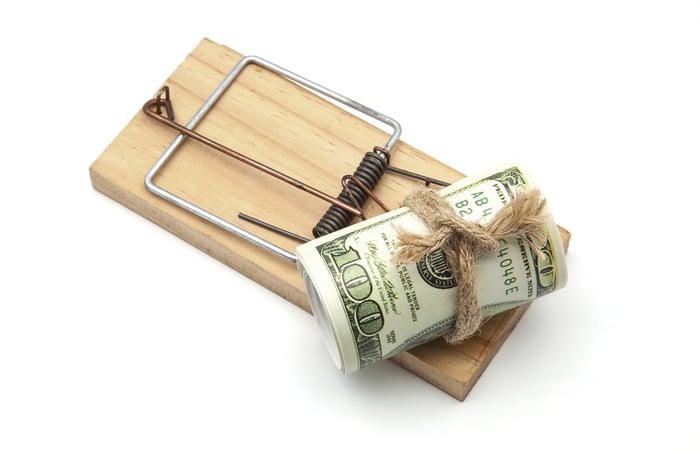One way that a company can reward its shareholders is by paying a dividend. But fairly frequently, dividends end up being cut, which is not particularly shareholder-friendly. There's a fine line that has to be walked to ensure that a dividend is sustainable.
Advance Auto Parts (AAP -1.88%) tripped over that line and ended up cutting its dividend by over 80%. Here's why investors should have seen trouble on the horizon -- and what to look for at other companies, too.
The numbers were huge
Advance Auto Parts, which operates a chain of aftermarket auto parts stores, started 2019 paying a quarterly dividend of $0.06 per share. In the final quarter of that year, it increased the dividend to $0.25 per share. That's a huge increase in both absolute and percentage terms. But the board of directors wasn't done.

Image source: Getty Images.
Four quarters later, the quarterly dividend was increased again, to $1.00 per share. That's another massive hike on both an absolute and percentage basis. But just three quarters after that increase there was another large jump, this time to $1.50 per share per quarter. While not quite as large as the earlier dividend hikes, it was still a very big change. Indeed, a 10% annual increase is generally considered pretty compelling. A 50% hike like the last one (the smallest of the three!) is unusually generous.
In fact, between the start of 2019 and the end of 2022, just a four-year period, the dividend increased a shocking 2,400%. Check out the graph below -- that's not a typo. It would be understandable if dividend investors were excited by the prospects of getting in on a company that suddenly looked like a dividend growth machine. That massive growth over such a short period of time, however, should have been a warning sign to dig a little deeper.

AAP Dividend Per Share (Quarterly) data by YCharts
Things get tight
One of the key metrics that dividend investors monitor is the payout ratio, or how much of earnings is being pushed to investors in the form of dividends. Lower numbers are generally preferable, as they indicate that a company can easily cover its dividend payment. Advance Auto Parts' payout ratio was a very low 4% in 2019. It rose to a far more troubling 77% in 2022.
In some industries, a high payout ratio isn't something to get too upset about. And, with a ratio still below 100%, Advance Auto Parts was able to cover its dividend payments with earnings. The real warning was the dramatic change in the payout ratio over such a short period of time. Not only was there little room for further increases, but the payout ratio didn't leave much room for adversity if the company's business suddenly faced headwinds.
When interest rates started to rise, Advance Auto Parts slammed into a brick wall. For example, a quick look at the company's earnings statement shows that its interest costs more than doubled year over year in the first quarter of 2023, going from $12.8 million to $29.7 million. Times interest earned, which looks at a company's ability to pay its trailing interest costs, fell dramatically over the past year -- even though leverage, as measured by the debt-to-equity ratio, didn't really change all that much.

AAP Times Interest Earned (TTM) data by YCharts
All in, the retailer's ability to support its dividend was clearly weakening. These are signs that show up again and again prior to dividend cuts. The big difference here is that Advance Auto Parts chose to go down this path by increasing the dividend so much so quickly, which it really didn't have to do.
Most investors would likely have been happy if it had just increased the dividend 5% or 10% a year (which would have resulted in a dividend of around $0.09 per share per quarter after four annual increases). That would have left the company with plenty of room to continue paying, and perhaps even increasing, the dividend today.
Question everything
When it comes to dividends, investors always have to question whether the story is too good to be true -- because usually it is. Often the problem is a yield that is so high that it is unsustainable. In the case of Advance Auto Parts, the rapid dividend growth was a story that couldn't last. In the end, the stock crashed when the dividend was cut in the face of business adversity, something that every single company eventually faces.
The good thing about stories like this, however, is that you can learn from them and apply the lessons to future investments. Too much dividend growth too fast should be treated with skepticism. A rapid increase in the payout ratio is a warning of increasing dividend risk. And leverage and interest costs shouldn't be ignored, because the quickest way to free up cash for interest expenses and debt reduction is often cutting the dividend.





